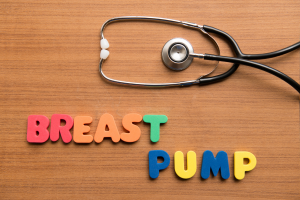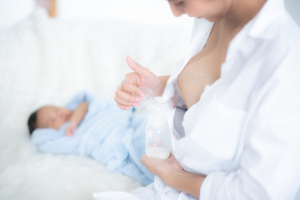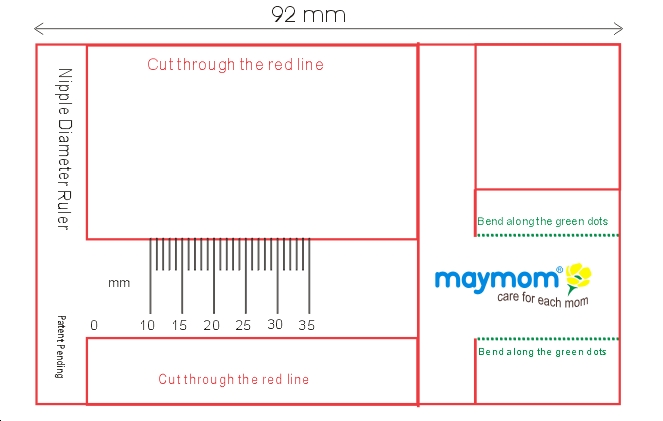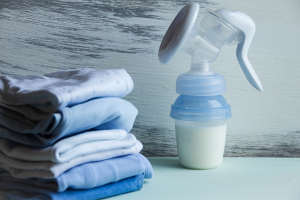The world of breast pumps can be a daunting place for parents, who wonder: What are the options? Why are there so many different types? Does expensive mean best? Do I actually need one?
In this post, I will try to provide you with an all you need to know guide to choosing a breast pump, and why you should be doing your homework before you have your baby.
So, whats the dealio?
Some mums will never need to use a breast pump as everything will go smoothly. Baby arrives on time after an unmedicated vaginal delivery, latches on, and feeds frequently and effectively, until the baby self-weans whenever he/she chooses. Sounds amazing right? Unfortunately this is not what happens for most mums, and I am a firm believer in preparation for all eventualities, so that when the bump in the road happens (which it will), you are armed and ready.
Parents are often advised by their healthcare practitioners not to buy a breast pump in advance of having their baby, and that there will be plenty of time after the baby is born to decide if you need one. While this advice makes sense on paper, it actually inadvertently causes parents to not prepare for this possibility. Then the baby arrives, something doesn’t go according to plan, and mum is too exhausted and overwhelmed to make an informed choice. At least if you have done your research before you have your baby, and either have a pump or know how and where you can get one quickly, you can then relax knowing that if you feel you need a breast pump, you know which one you want and where you can get it from quickly. It is always advisable to seek a Lactation Consultant if you are having breastfeeding issues, especially in the early days. The earlier an issue is addressed the quicker and easier it is to resolve.
Why would I need a breast pump?

There are many reasons why you may need a breast pump. Here are some of the reasons:
- Premature baby – this can lead to baby being taken to the neonatal unit. Premature babies also may not have a mature suck, swallow, breathe reflex, therefore may be unable to latch on.
- Babies with underlying conditions, who may or may not be able to feed directly at the breast, such as babies with cleft lip/palate or Down Syndrome.
- You may not be able to access a pump in the hospital (if they are all in use), therefore having your own if needed, can make all the difference between breastfeeding and not.
- Exclusively breastfeeding, can be absolutely exhausting in those early weeks. Having a pump means that you can ‘take a break’ for a feed, and someone else can feed your baby.
- If supply is dropping, having a breast pump is a fast, and effective way to boost supply again.
- If you are returning to work or planning to go out for a night, you can build up a freezer stash. See my post on this: Breastfeeding and Returning to Work
What are breast pumps?
Breast pumps are milk collection devices that replicate your baby feeding in order to extract milk from your breasts. There are many different types.
Silicone Breast pumps

Silicone breast pumps are advertised as a pumps, but they do not actually pump your breasts. They are made entirely of silicone and work by providing negative pressure for breast milk to flow into the device. They are mainly used for
- Relieving Engorgement – you can take off excess milk to the level where you feel comfortable.
- Collection device – you can pop the device on the breast baby is not feeding from (as milk often flows from the other breast, when baby latches on, and you don’t want to lose any of that liquid gold).
- Overactive Milk Ejection Reflex – This is very handy to put on if you have a fast MER and you need to take off that milk before latching baby on directly.
It must be noted however that for some people these devices don’t work i.e. they cannot get milk out with it and it can be painful for these people. This is rare though. It must also be advised that using a silicone breast pump in the early days can lead to oversupply, which can lead to other issues. These silicone breast pumps should only be used once or twice a day IF needed at all.
Hand Pumps
Hand pumps have become a bit left behind in recent years, since the arrival of the silicone breast pump and the improvements and increased affordability of really good double electric breast pumps. However for some women, being hooked up to an electric breast pump for any amount of time is extremely off-putting. However, a hand pump that is controlled by you and can be easily taken out and about with you, with no need for batteries or sockets, can be very freeing. Some women also report that they get more milk with a hand pump and hand expression than they do from an electric pump. So it very much depends on the person and how they respond to this equipment.
Electric Breast Pumps
Open vs. Closed System
So, that brings us to the main event really. There are 2 categories of breast pumps. Open and closed system. It sounds more complicated than it actually is. Closed system pumps have a backflow prevention system in place, which stops milk and moisture from going up the tubing and leading to possible mould in the tubing and motor of the pump over time. Closed system pumps are recommended by Lactation consultants over Open Systems. There is a theory that you can pass on closed system pumps to others, which you can’t with open system pumps, but ideally, you shouldn’t share either. If you are planning to get a second hand pump, make sure you get new tubing, flanges etc., and that it’s a closed system pump.
Single vs. Double
If you are going to the trouble and cost of buying an electric pump, I would always advise to go for a double. The reason being, that if you need to pump at all you usually need to pump both breasts (all double pumps can also be used singly, if you only need to pump one side). Pumping both breasts simultaneously also leads to increased volumes versus pumping one breast at a time, which takes double the time. So any system that shortens your time spent on a pump is a good thing. If you are using a double pump, you will most likely be finished in 15-20mins.
Hospital Grade Pumps

These pumps are the best of the best. They were previously too expensive so there were pump rental schemes with pharmacies. However, hospital grade breast pumps are very affordable now. For advice re which pump to consider purchasing, speak to you Lactation Consultant, midwife, PHN, La Leche League, or Cuidiu counsellor or other local mama’s about this, and they should be able to tell point you in the right direction. Again I would advise you to have this research done before you have your baby.
Hospital grade pumps are ideal for mama’s who for any reason are separated from their babies (neonatal unit) or whose babies are unable to breastfeed directly due to prematurity, cleft lip/palate, etc. These mama’s need to pump a minimum of 8 times in 24 hours, which can be very intense, when you are postnatal and may have a new-born to care for. You want to pump as efficiently and effectively as possible to ensure you stimulate a good supply for when you can get baby latched on.
Flange Size

A flange is the part of the pump that you place in contact with your breast (see image above). It is important to consider your flange size if you are pumping, as the incorrect flange size can lead to sore nipples, blocked ducts, mastitis and reduced supply. The standard size flange that comes with most pumps is 24mm, but nipples come in all shapes and sizes and it is the nipple diameter that we measure, not the areola. You can download free nipple rulers that you can print off, cut out and make yourself which can make it a bit easier to get your exact nipple diameter (see below), but these are not necessary.

You measure your nipple width by placing a ruler/tape at the base of the nipple. If you are measuring your nipple prior to pumping you add on 3-5mm and that is your flange size. For example, if your nipple base measures 17mm, you will be using a 21mm flange size. If you measure your nipple after pumping, you add on only 1-2 mm as your nipple will be swollen from the pumping.
The most important thing is that your nipple is sitting comfortably in the center of the flange. You want to ensure that your nipple is not rubbing against the inside of the flange, and that none of the areola is being pulled into the flange during pumping.
Things to note:
- Breast massage prior to pumping can help to stimulate your let-down faster.
- Breast compressions while you are pumping increases your pumped volumes also, which will increase your supply.
- If you are pumping throughout the day or power pumping for an hour at night, it’s a really good idea to get an old sports bra, cut out a hole in the nipple area, and insert your flange there, for some hands free pumping, or free hands to massage your breasts while pumping.
- Take no notice of the amounts of milk you pump, as this will vary depending on the time of day, your tiredness, stress etc.
- Your baby is always going to get more from you than a pump as they are amazing little suckers.
- Cover the milk collection containers (with baby socks or a muslin) while you are pumping, as you will produce less milk if you are stressing about how much you are not getting compared to last time! Instead, think about your baby and even look at pictures of him/her while you are pumping. Take deep breaths in and try a few minutes of mindfulness. Try to begin viewing your pumping time as “me time”.
- If you are pumping exclusively, and really want to know if your supply is increasing, then you can total your 24hour production rather than comparing individual pumping sessions.
- You can claim back 20% on the cost of your breast pump or rental, as long as its recommended by a doctor. See https://www.revenue.ie/en/personal-tax-credits-reliefs-and-exemptions/health-and-age/health-expenses/what-are-qualifying-expenses.aspx
Conclusion

Hopefully you will never need a breast pump, but as I said I believe in preparation. If you are expecting your first baby and don’t know where to start, start by reading this and I’m Pregnant! So, what do I need to consider to prepare to breastfeed my baby?, talking to other breastfeeding mums, join a local or online Breastfeeding Support Group. I run a weekly Breastfeeding Support Group on a Thursday morning, which you can access via joining my Facebook Page Latching On: https://www.facebook.com/groups/388964118932372. You will also find lots of breastfeeding related information on this group, as well as the support of other mums who have plenty wisdom to share.
Speak with your local L.C. or Cuidiu Counsellor, or breastfeeding mom friend. Know where you can get a pump at short notice. If you are having any difficulty with your pump or flange size contact your local Lactation Consultant or breastfeeding specialist, who will assess you and your baby and then help you make a plan for your particular issue. You can find your nearest Lactation Consultant here: https://www.alcireland.ie/find-a-consultant/.
If you want to see an excellent video on hands-on pumping that shows you how to pump and maximise your milk production check out this webpage from Stanford and Dr Jane Morton: https://med.stanford.edu/newborns/professional-education/breastfeeding/maximizing-milk-production.html
Happy Pumping!!!


